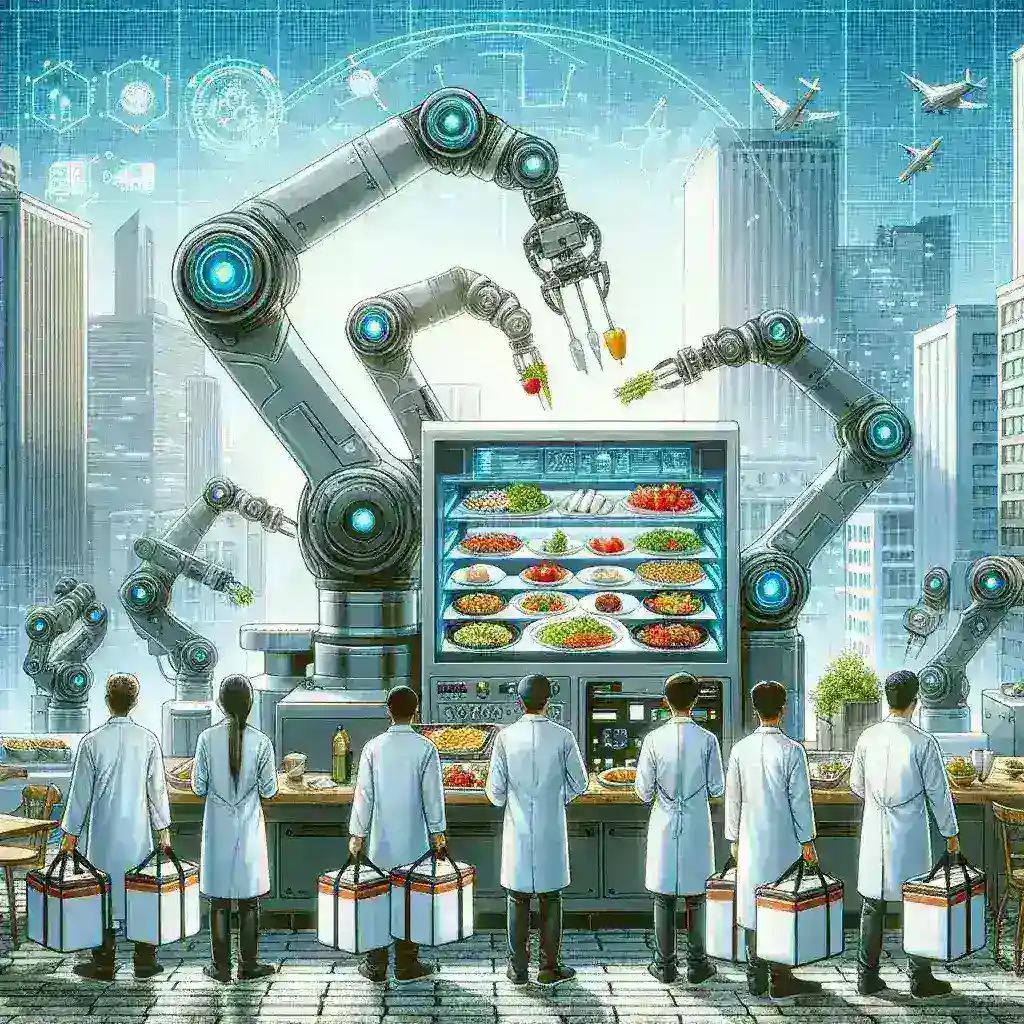Uber Eats Expanding Robotic Kitchen Partnerships in the U.S.

Uber Eats Expanding Robotic Kitchen Partnerships in the U.S.
As the food delivery landscape evolves, Uber Eats is at the forefront of innovation with its recent expansion of robotic kitchen partnerships across the United States. This strategic move not only aims to streamline operations but also addresses the increasing demand for efficient and reliable food delivery services. In this article, we will delve into the implications of this expansion, its historical context, and future potential, along with the pros and cons associated with robotic kitchens.
The Rise of Robotic Kitchens
The concept of robotic kitchens is not entirely new. The history of automation in food preparation dates back to the mid-20th century, but recent advancements in technology have thrust this idea into the spotlight. As consumers increasingly lean towards convenience and speed, companies have begun leveraging automation to meet these demands.
Historical Context
In the past few years, several industries have embraced automation, with the food service sector being no exception. The introduction of robotic kitchens promises to revolutionize how food is prepared and delivered. These kitchens utilize state-of-the-art technology, including AI, robotics, and IoT (Internet of Things), to create a seamless cooking process.
Uber Eats’ Strategy
Uber Eats has taken significant steps to integrate robotic kitchens into its business model. By partnering with various tech-driven kitchen startups, Uber Eats aims to enhance operational efficiency, reduce wait times, and ultimately improve customer satisfaction.
Future Predictions
Experts predict that the demand for robotic kitchens will continue to rise in the coming years. With advancements in AI and machine learning, these kitchens are expected to become even more efficient, potentially reducing food preparation time by up to 30%. Furthermore, the ability to operate 24/7 without the constraints of human labor presents a unique advantage that could reshape the industry.
Pros and Cons of Robotic Kitchens
Pros
- Increased Efficiency: Robotic kitchens can prepare food faster than their human counterparts, leading to quicker delivery times.
- Consistency: Machines offer a level of precision that eliminates human error, ensuring that every order is prepared to perfection.
- Cost-Effectiveness: While initial setup costs may be high, the long-term savings on labor and reduced waste can be significant.
- 24/7 Operations: Robotic kitchens can operate without breaks, allowing for round-the-clock service.
Cons
- High Initial Investment: The cost of installing robotic kitchens can be prohibitive for smaller businesses.
- Lack of Personal Touch: Some customers may miss the human interaction that comes with traditional food preparation.
- Maintenance Challenges: As with any technology, robotic kitchens require regular maintenance and updates, which can incur additional costs.
Real-World Examples
Several pioneering companies have already embraced the concept of robotic kitchens, yielding promising results. For instance, Chowbotics has introduced a salad-making robot that can whip up customized salads in a matter of minutes. Similarly, Spyce operates a restaurant where meals are prepared by robots, showcasing the potential of automation in the culinary world.
Cultural Relevance
The integration of robotic kitchens into the food delivery industry is not merely a business trend; it reflects a larger cultural shift towards convenience and efficiency in modern life. As people’s lifestyles become increasingly fast-paced, the demand for quick and easy meal solutions continues to grow.
Conclusion
The expansion of Uber Eats’ partnerships with robotic kitchens marks a significant milestone in the evolution of food delivery services in the U.S. By leveraging advanced technology, Uber Eats is positioning itself to meet the challenges of a rapidly changing market. While the move towards automation comes with its own set of challenges, the potential benefits of increased efficiency and customer satisfaction are hard to ignore. As we look to the future, it will be fascinating to see how these innovations shape the culinary landscape and the overall dining experience.
